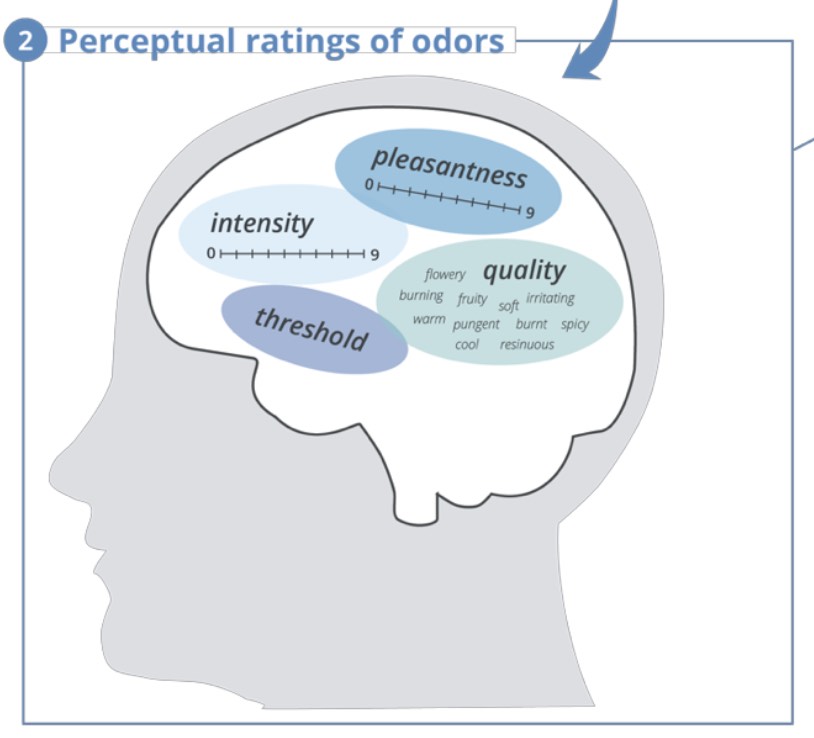A growing body of research aims at solving what is often referred to as the stimulus-percept problem in olfactory perception. Although computational efforts have made it possible to predict perceptual impressions from the physicochemical space of odors, studies with large psychophysical datasets from non-experts remain scarce. Following previous approaches, we developed a physicochemical odor space using 4094 molecular descriptors of 1389 odor molecules. For 20 of these odors, we examined associations with perceived pleasantness, intensity, odor quality and detection threshold, obtained from a dataset of 2000 naïve participants. Our results show significant differences in perceptual ratings, and we were able to replicate previous findings on the association between perceptual ratings and the first dimensions of the physicochemical odor space. However, the present analyses also revealed striking interindividual variations in perceived pleasantness and intensity. Additionally, interactions between pleasantness, intensity, and olfactory and trigeminal qualitative dimensions were found. To conclude, our results support previous findings on the relation between structure and perception on the group level in our sample of non-expert raters. In the challenging task to relate olfactory stimulus and percept, the physicochemical odor space can serve as a reliable and helpful tool to structure the high-dimensional space of olfactory stimuli. Nevertheless, human olfactory perception in the individual is not an analytic process of molecule detection alone, but is part of a holistic integration of multisensory inputs, context and experience.

A growing body of research aims at solving what is often referred to as the stimulus-percept problem in olfactory perception. Although computational efforts have made it possible to predict perceptual impressions from the physicochemical space of odors, studies with large psychophysical datasets from non-experts remain scarce. Following previous approaches, we developed a physicochemical odor space using 4094 molecular descriptors of 1389 odor molecules. For 20 of these odors, we examined associations with perceived pleasantness, intensity, odor quality and detection threshold, obtained from a dataset of 2000 naïve participants. Our results show significant differences in perceptual ratings, and we were able to replicate previous findings on the association between perceptual ratings and the first dimensions of the physicochemical odor space. However, the present analyses also revealed striking interindividual variations in perceived pleasantness and intensity. Additionally, interactions between pleasantness, intensity, and olfactory and trigeminal qualitative dimensions were found. To conclude, our results support previous findings on the relation between structure and perception on the group level in our sample of non-expert raters. In the challenging task to relate olfactory stimulus and percept, the physicochemical odor space can serve as a reliable and helpful tool to structure the high-dimensional space of olfactory stimuli. Nevertheless, human olfactory perception in the individual is not an analytic process of molecule detection alone, but is part of a holistic integration of multisensory inputs, context and experience.
